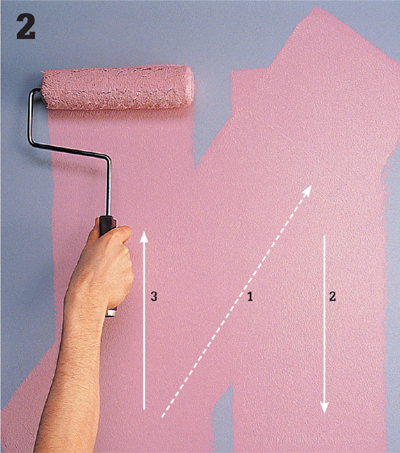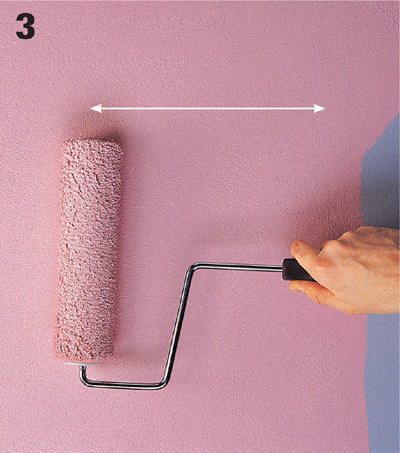 8. Roller Techniques
8. Roller Techniques 8. Roller Techniques
8. Roller TechniquesPaint surfaces in small sections, working from dry surfaces back into wet paint to avoid roller marks.
If a paint job takes more than a day, cover the roller tightly with plastic wrap or store it in a bucket of water overnight to prevent the paint from drying out.

Wet the roller cover with water (when painting with latex paint) or mineral spirits (when painting with alkyd enamel), to remove lint and prime the roller cover. Squeeze out excess liquid. Fill the paint tray reservoir. Dip the roller fully into the reservoir to load it with paint. Lift the roller from the paint reservoir, and roll it back and forth on the textured ramp to distribute the paint evenly onto the nap. The roller should be full, but not dripping, when lifted from the paint pan.
 How to Paint With a Paint Roller
How to Paint With a Paint Roller
With the loaded roller, make a diagonal sweep (1) about 4' long on the surface. On walls, roll upward on the first stroke to avoid spilling paint. Use slow roller strokes to avoid splattering.

Draw the roller straight down (2) from top of the diagonal sweep. Shift the roller to the beginning of the diagonal and roll up (3) to complete the unloading of the roller.

Distribute paint over the rest of the section with horizontal back-and-forth strokes.

Smooth the area by lightly drawing the roller vertically from the top to the bottom of the painted area. Lift the roller and return it to the top of the area after each stroke.